Disruptive Innovation
What is accepted is no longer valid, what is valid is not yet accepted. Jamshid Gharajedaghi
Liberating Structures productively disrupt conventional patterns in how we work together. They change dramatically the way results are generated without expensive investments, complicated training, or dramatic shifts in organizational structures.
Liberating Structures can easily and inexpensively replace conventional microstructures that are in everyday use. The market for engaging people will never be the same. LS are not only for leaders and change experts but also for every person in the organization to use."

LS are not best practices imposed on a whole organization. They do not rely on expensive and lengthy efforts to train people in an attempt to change their behaviors. They are instead a set of simple microstructures from which individuals and groups can choose what suits their likes and dislikes then mix and match them flexibly to address their challenges.
LS are easy to learn. A working knowledge of individual LS can be developed in less than an hour."
When LS are introduced many of the big five conventional approaches that people use all the time—presentations, open discussions, managed discussions, status reports, and brainstorms—become less attractive or fall out of favor.
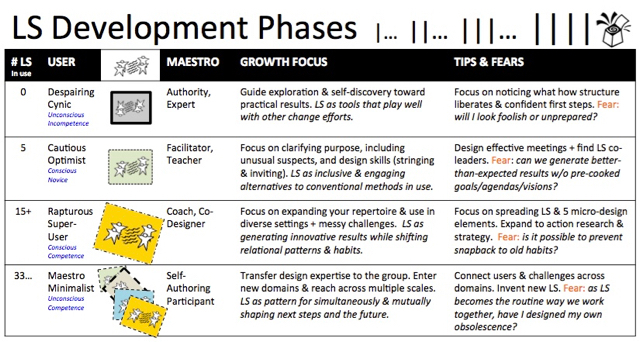 When users get serious about liberating with LS and focus on expanding their repertoire, maestros have described a progression through stages. Each level transcends and includes the previous stage. How is your journey?
When users get serious about liberating with LS and focus on expanding their repertoire, maestros have described a progression through stages. Each level transcends and includes the previous stage. How is your journey?
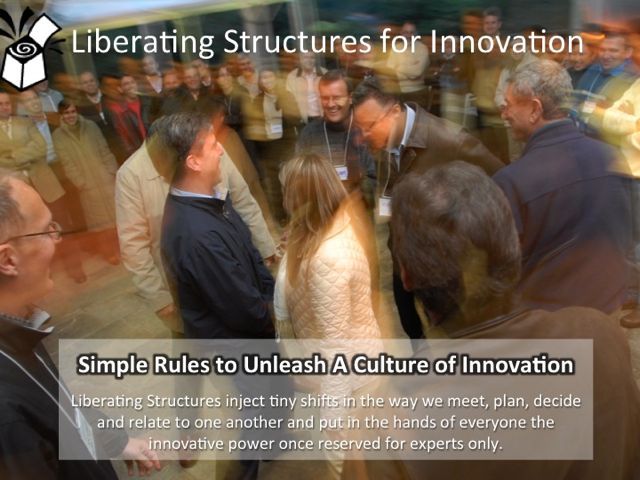 Microstructures are surprisingly simple and powerful
Microstructures are surprisingly simple and powerful
Like all disruptive innovations, no one expects them. They produce unexpected results. Shifts in the pattern of interaction make it possible to immediately include, engage and unleash everyone in shaping the future. Small changes generate breakthrough results. LS reveal an immense source of untapped knowledge, capability, and momentum. Expect and rely on surprise!
We want fewer possibilities that are more interesting and productive. The LS repertoire is carefully curated.
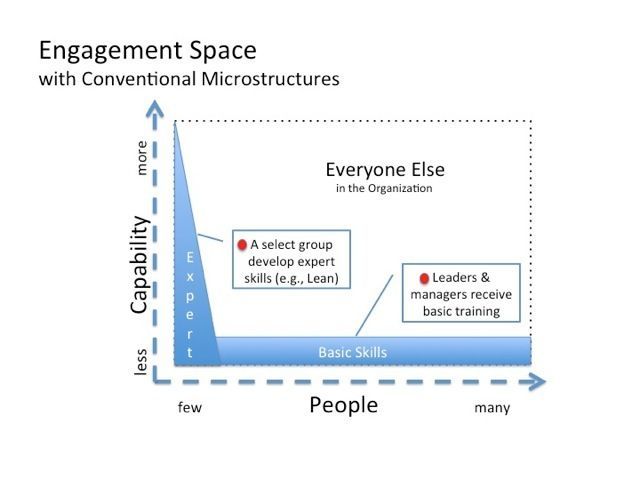
Above: Conventional investments focus on developing basic skills in leaders/managers and the advanced training of experts (e.g., Lean, facilitator training, change management). The rest of the people—the vast majority—are not included or engaged in learning how to shape their future together.
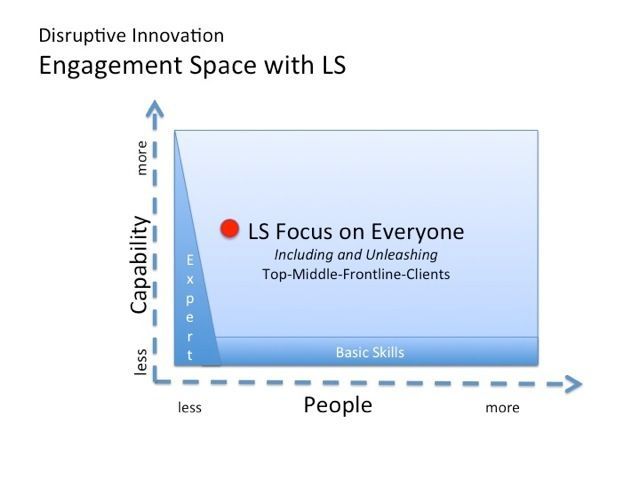
Above: In contrast, LS make it easy to include everyone in developing skills and using them everyday without extensive training. Everyone includes leaders, managers, the frontline as well as clients.
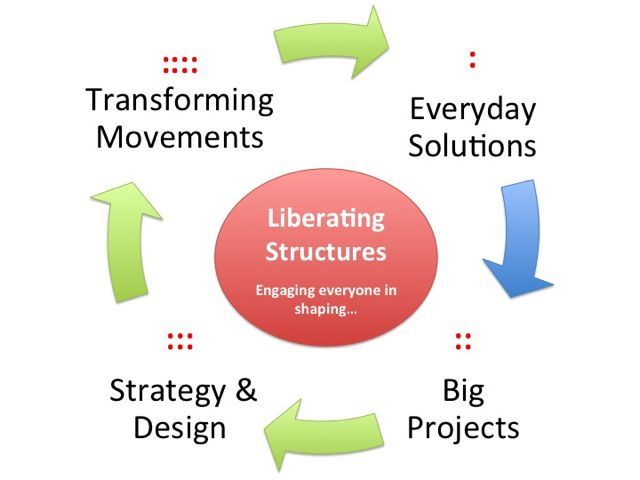 Productive disruption is possible in everyday work, big projects, strategy and transforming movements
Productive disruption is possible in everyday work, big projects, strategy and transforming movements
Bonus: LS users report that LS are complementary to Lean and Design Thinking methodologies.
Lean practitioners have successfully integrated LS into their work. Often, they see LS as relational coordination that complements more technical process improvement and value stream mapping activities.
Design Thinking practitioners also find LS complementary. LS help non-designers participate more fully in ethnographic observations and prototyping efforts.
With Lean and Design Thinking, LS complement efforts to distribute participation and unleash creativity up and down in the organization. Many more people can be included without extensive training.
I can’t understand why people are frightened of new ideas. I’m frightened of the old ones. John Cage

Quick Litmus Test
Is your team, community, or leadership challenge a good place to apply Liberating Structures? Test-the-fit for your challenge with these questions.
- Does it feel like “herding cats” when the individual players are gathered together?
- Do key players in the system have unequal levels of information & power?
- Are very diverse types of people & professions (with different mental models) required to accomplish goals?
- Are formal links among players loose or weak in many cases?
- Is the evidence to guide global practice relatively thin, not “translated” for application in varied local contexts by diverse frontline workers?
- Does making the parts more efficient or effective at a local level often fail to improve system performance at higher levels?
- Although an organizational structure is established, do “best practices” spread unevenly (or not at all) from local applications to other parts of the system?
- Have gaps and time lags in your work or community setting (that may have permitted a more deliberate or linear approach) evaporated, reducing opportunities “to figure it out” or “get it right”?
- Does order unexpectedly emerge from the mess, despite what could be predicted by conventional requirements for a clear vision, firm leadership, tight coordination, and vertical alignment?
For many people, a substantial portion of their work fits this profile. If you have answered “yes” to most of these questions, Liberating Structures may fit you and your situation.
 LS is an innovation that scales up and out through shared experience
LS is an innovation that scales up and out through shared experience
